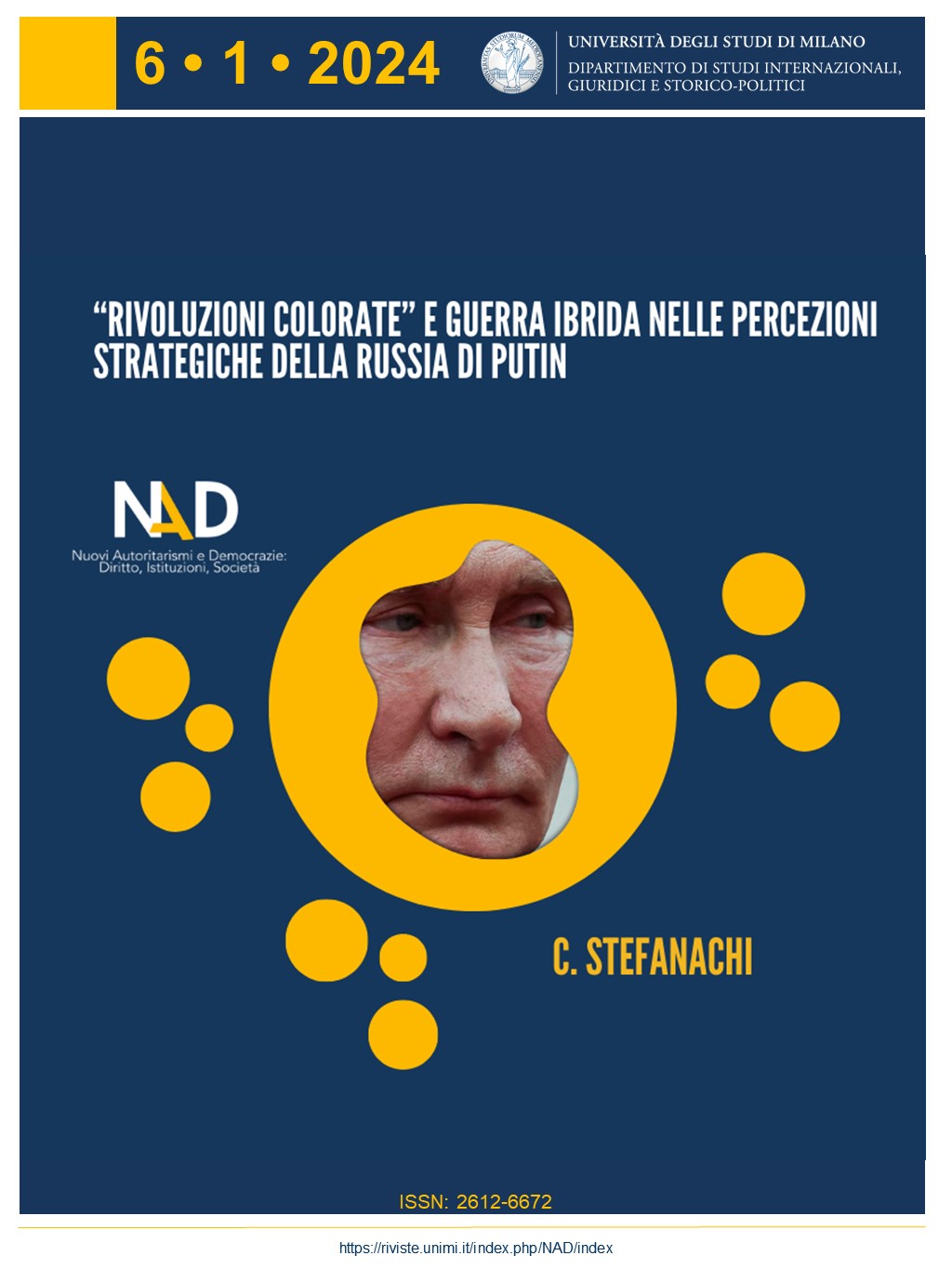The “color revolutions” in the strategic perceptions of Putin’s Russia: the “hybrid war” of the West
DOI:
https://doi.org/10.54103/2612-6672/23960Keywords:
Color revolutions, Political warfare, Hybrid warfare, RussiaAbstract
The “color revolutions” which took place in Georgia and Ukraine between 2003 and 2005 deeply affected Russia’s political and strategic perceptions. This paper tries to explain the underlying reasons for this by focusing on some specific aspects of the unfolding of “color revolutions” and on their potential to reinforce Russia’s tendency to attribute to Western powers malicious intents towards Moscow. In this regard, activities in Georgia and Ukraine of western NGOs, which were already involved in the political warfare conducted by the US in Poland in the years of the Reagan administration (support to Solidarnosc) and again in Serbia in the post-Cold War years (aid to the opposition groups that ousted Miloševic in 2000), are particularly relevant. This article illustrates how in recent Russian strategic discourse “color revolution” has become synonymous of “hybrid warfare” (intended as Western subversive warfare), and that US political warfare in Poland and Miloševic’s fall in Serbia are regarded by Russians as early cases of “color revolutions”.
References
L. A. Mitchell, The Color Revolutions, University of Pennsylvania Press, Philadelphia, 2012.
M. MacKinnon, The New Cold War. Revolutions, Rigged Elections and Pipeline Politics in the Former Soviet Union, Random House Canada, 2007,
O. Jonsson, The Russian Understanding of War. Blurring the Lines between War and Peace, Georgetown University Press, Washington D.C., 2019.
M. Galeotti, Russian Political War. Moving Beyond the Hybrid, Routledge, London and New York, 2019
O. Fridman, Russian ‘Hybrid Warfare’. Resurgence and Politisation, Oxford University Press, Oxford, 2002,

Downloads
Published
Issue
Section
License
Copyright (c) 2024 Corrado Stefanachi

This work is licensed under a Creative Commons Attribution-NonCommercial-NoDerivatives 4.0 International License.









